Lighting
Smart lighting falls into two main categories. The first is smart light bulbs, which provide ambience mood lighting with different colours and brightness. The second is the ability to switch lights on and off manually, and via the app, which includes the use of other battery powered button devices.
Dimmable & Coloured Bulbs
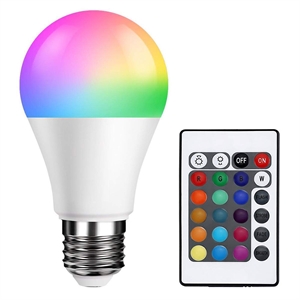
Smart light bulbs are one of the most popular types of device used in home automation systems, especially for setting ambiance mood lighting.
Remotely controlled colour changing LED light bulbs have been used for this purpose for many years. The remote controller is a small keypad with 16 colour selections, 4 lighting sequences, and a dimming control.
These are very low cost and reliable devices. The controller also has a very long battery life. We have had one on test. It is switched on and off once per day, and the batteries have not be changed since it was installed 3 years ago.
The previous settings are retained in memory within the light bulb, providing that it is only switched off via the controller. If power is removed from the light bulb, then these settings are lost, and have to be reselected by the user.
The main limitations is that a separate controller is required for each bulb.
Against this background, the LED technology, and the control of the bulb settings, is well proven. Their biggest weakness, which is the loss of the settings when the power is removed, has been carried forward into the smart light bulbs used for home automation.
Smart light bulbs essentially replace the infra-red receiver with a ZigBee transceiver. This enables groups of bulbs to be controlled as a group, or individually from the app.
Smart Bulbs
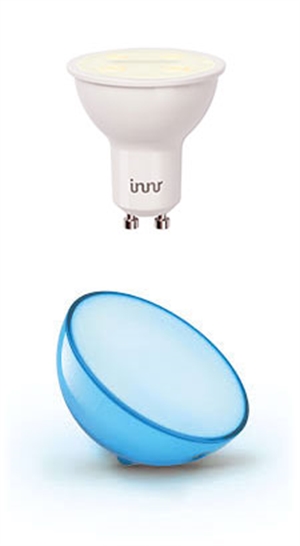
There are many suppliers of smart bulbs for use in a home automation system. The best known ZigBee devices are probably Osram, Philips Hue, Sylvania, and Innr, and the best known Domitech devices and Aeotec. There are other brands, such as Hive, but these are produced by one of the major manufacturers and rebadged.
All of these smart bulbs are dimmable white lights, coloured lights, or dimmable coloured lights.
Once these devices have joined the network, they all function very well as light bulbs. The can controlled in groups by the app, with the colour and brightness of each individual bulb pre-set, also via the app.
In some existing systems, these are referred to as “scenes”. In this system, they are merely another type of action, which can be invoked by a dedicated activator, or by another action.
The main problem occurs when the power to a bulb is supplied through a conventional manual light switch. If for no other reason than habit, people tend to switch the lights off in their home with these switches.
Once the power has been removed from a smart bulb, it loses its connection with the network, and it loses its previous settings. When the power is next applied to the bulb, it is set to white at full brightness. The same applies if the firmware in the bulb is updated.
To re-join the network, the user must go through the re-joining procedure, which includes recycling the power to the bulb several times. Having done so, the colour and brightness of the bulb has to be reset. This can be achieved automatically if the bulb has a default setting, which can be resent from the hub to the bulb, once it has re-joined the network.
The possibility of permanently powering a smart bulb, by bypassing the manual switch is unlikely to be an option, especially the UK, because there is probably an EU Directive preventing this on safety grounds. The rules in the USA may be less demanding, due to the lower supply voltage.
Smart Light Bulbs as Repeaters
Some smart light bulbs have the ability to act as repeaters / range extenders, by relaying signals between other devices within a mesh network. In practice, there are known firmware issues in these devices that cause the bulb to randomly stop acting as a repeater. This applies to the bulbs from more than one manufacturer.
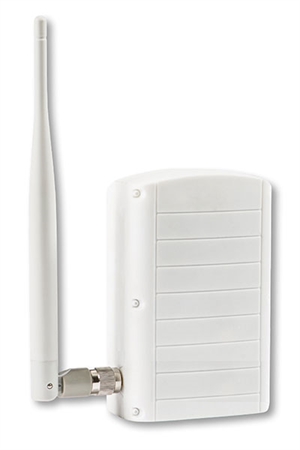
Although anecdotal, it also appears that this fault can lock up the entire network. We have certainly experienced this at least once, with one of our test networks.
This unreliability is a problem for most users, because they may be unaware of the extent to which their network is reliant on a bulb acting as a repeater. The only way of reducing this risk is for a second repeater, such as a smart plug, to be located in the vicinity of the smart bulbs.
For anyone looking to purchase new smart bulbs, those without a repeater capability might be the preferred option.
As the smart light bulbs are mains powered, WiFi can be used instead of ZigBee or Z-Wave. As WiFi smart light bulbs do not act as repeaters,this eliminates this source of unreliability.
More generally, the secondary role of both smart plugs and smart bulbs as repeaters, which is central to the mesh network concept, may not be the best solution. A separate, dedicated repeater with a high gain antenna provides a much more solid and reliable solution.
Hive has gone down this route with its 360 Hub. Whereas the previous hub could only contain a very small antenna, the height of this unit has enabled it to be equipped with a much larger high gain antenna. This is probably also why Hive recommends that it be located centrally within the home.
Smart Light Switches
Most light switches in the UK have a live mains wire, and another wire connecting to the light bulb. They do not have a separate neutral mains wire. This is important, because most smart switches require a neutral connection, as well as a live connection.
A neutral wire can be installed, but this normally involves feeding a wire from the area above the ceiling, either between floors, or in a loft space, down to the switch. This possibility of being able to do this depends on the existing wiring.
For example, the existing wiring may be encased in a steel or plastic protective tube. If there is sufficient room in this tube, then the neutral wire can be fed down alongside the existing wire.
If not, then the wall has to be opened up to add a second protective tube containing the neutral wire inserted from the ceiling down to the light switch. This will then require some redecoration, to cover up the channel that has to be made in the wall to insert the tubing.
In the UK, any electrical work, even just replacing a manual light switch with a smart one, and especially any modifications to the mains wiring, must, by law, be undertaken by a qualified electrician.
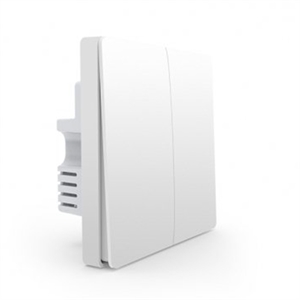
Fortunately, some smart switches, such as some of the models made by Aqara, do not require a neutral wire, and are ideal for retrofitting in existing homes.
We have tested several of these Aqara switches, both single and double paddle, and they have worked perfectly reliably. They enable a light to be switched on and off manually, or via the app, or other device within the home, such as an Osram Lightify four button switch.
The only negative point, which probably applies to all smart switches, is that the cavity behind the manual switch is too shallow to accommodate a smart switch. Plastic spacers i the same colour as the switch can be fitted between the back of the switch surround and the wall. This is not too aesthetically pleasing, but it avoids having to extend the switch cavity, and the inevitable repair to the decoration round the switch.
Smart wall switches are also intended for use with normal lighting, so they do support higher power devices.
Many of these considerations may not apply in the USA, due to the differences in house construction, except perhaps in apartment blocks, and differences in legislation surrounding electrical work.
The control system is always aware of the current status of a smart switch, so the system can ensure that certain lights are always switched off at certain times of day. The smart switch also reports the power being drawn by the light back to the control system, so that any bulb failures can be detected, and the user can be alerted.
Smart dimmers can be used instead of smart switches. The main different is that the required brightness to the dimmer, which ranges from 0%, for off, to 100%.
Smart Relays
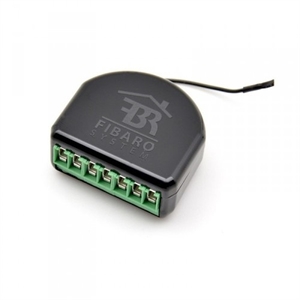
Relays provide a better solution for multi-way switches than smart switches. The most common application of a multi-way switch in the home is typically a landing / stairs light, which can be switched on and off by either of two switches. One switch is normally located at the bottom of the stairs, and the other at the top.
Rather than replace both switches with smart switches, a better option is to put a smart switch between the supply to the bulb and the bulb. The relay can then be toggled by the control system to change the state of the light from on to off, or vice versa.
As with the installation of a smart switch, access has to be gained to the wiring of the light to add the relay. If the light is mounted in the ceiling, then this requires access to the space between floors, or the loft space. If the area is accessible by people, such as in the loft space, then the relay needs to be containing within an insulated container, such as a normal junction box enclosure.
If the lights are wall mounted, then the relay has to be added into the last common live line, prior to it being split into the connections to each light. This may involve creating a further cavity to the wall, probably in the proximity to the switch, for an enclosure for the relay. There is normally insufficient space behind a manual switch to accommodate a relay.
As with the light switches, in the UK, any electrical work must be undertaken by a qualified electrician.
The relay views the input from the switches as being a logic state, rather than a source of power. If the state changes, then the relay simply toggles on or off.
The control system is always aware of the current status of the relay, so the system can ensure that certain lights are always switched off at certain times of day. The relay also reports the power being drawn by the light back to the control system, so that any bulb failures can be detected, and the user can be alerted.
Smart dimming relays can be used instead of smart switched relay. The main different is that the required brightness to the dimming relay, which ranges from 0%, for off, to 100%. Although more than sufficient for normal lighting, smart dimming relays also can only support devices with a much lower power, whereas smart switched relays capable of supporting much higher loads are available.
Scheduling & Events
Light switches can be scheduled to turn on and off at certain times. For example, a main light might be switched on during certain times, such as during the evening, and then a much lowered powered light switched on overnight.
The main light could be, say a hallway light, perhaps together with a porch light, bot managed through smart light switches, and the lower power background lighting could be powered by a smart plug.
Typically, the main light might be scheduled to switch on at 6:00 am, at which time the background light is switched off. The main light is then switched off just after sunrise, and is switched back on just before sunset. The main light is then switched off at 11:00 pm, at which time the background light is switched on.
If an Internet connection exists, then the local sunrise and sunset times can be obtained. Otherwise, the system continues with the previous settings.
Lights can also be triggered by events, such as a door opening, or motion being detected. Different strategies can then be adopted for switching the lights off, such as after a fixed period of time.